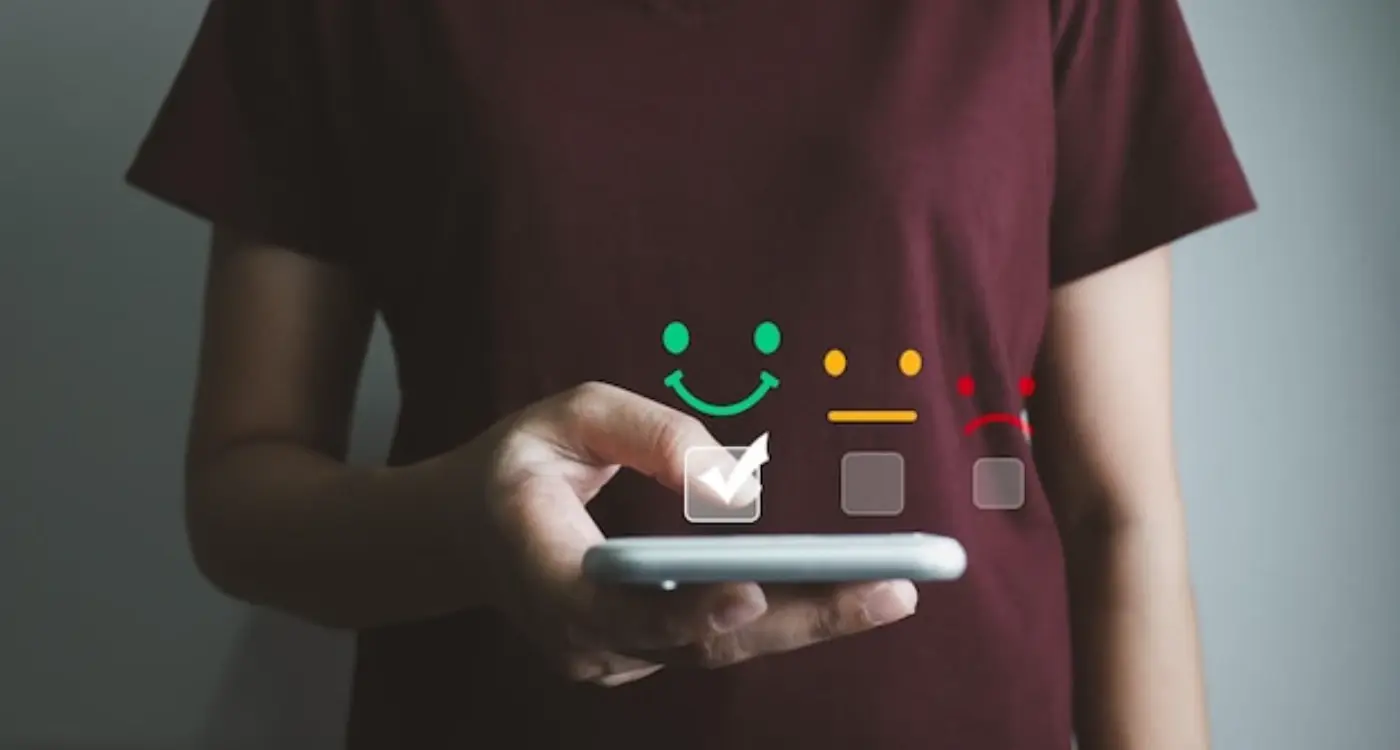What Makes Users Actually Share App Referral Links?
Most people think referral links spread through apps like wildfire because of clever marketing tricks or flashy incentives. But the truth is far more interesting—and it all comes down to basic human psychology. When someone shares your mobile app with their friends, they're making a tiny social decision that says something about who they are and what they value.
The numbers tell us that apps with strong referral programmes grow 3.5 times faster than those without. Yet most app developers focus on the wrong things when trying to get people to share. They throw money at reward systems or bombard users with pop-ups, missing the real drivers of sharing behaviour completely.
People don't share apps because they want rewards—they share them because they want to help someone they care about solve a problem
Understanding user behaviour isn't just about psychology textbooks and theory; it's about recognising that every tap, swipe, and share tells a story about human connection. When we dig into sharing psychology, we start to see patterns that can transform how we build and design mobile apps. The users who become your biggest advocates aren't necessarily your most active users—they're the ones who see genuine value in what you've created and want others to experience it too.
The Psychology Behind Why People Share
After building mobile apps for over eight years, I've noticed something fascinating about human behaviour—people share things for remarkably predictable reasons. It's not random at all. When someone shares your app referral link, they're acting on deep psychological triggers that we can actually understand and work with.
The most powerful driver is social status. People love to be seen as helpful, knowledgeable, or first to discover something cool. When your mate shares that brilliant new fitness app with you, they're not just being nice—they're positioning themselves as someone who finds great stuff. It makes them feel good about themselves.
The Six Core Sharing Motivations
- Looking helpful and generous to friends
- Gaining social recognition as a trendsetter
- Expressing their personal identity and values
- Strengthening relationships through shared experiences
- Getting reciprocal benefits or rewards
- Feeling part of a community or movement
There's also reciprocity at play. If someone genuinely loves your app and it's made their life better, they want to return that favour to you and pass on the benefit to others. It's basic human nature—we like to share good things with people we care about.
The smartest app developers understand these motivations and design their referral systems around them, making sharing feel natural rather than forced.
What Motivates Users to Recommend Apps
I've watched countless mobile app campaigns over the years, and there's one pattern that never fails to show up: people share apps when they get something meaningful in return. Not just monetary rewards—though those work too—but something that makes them feel good about themselves or helps them connect with others.
The strongest motivation comes from solving real problems. When someone discovers an app that genuinely makes their life easier, they naturally want to tell their friends about it. Think about it: if you found something that saved you time or money, wouldn't you want to share that discovery? This organic sharing happens because people feel helpful when they pass along useful information.
The Power of Social Connection
Users also share apps when it brings them closer to people they care about. Gaming apps see this all the time—players invite friends not just to boost their own progress, but because shared experiences are more enjoyable. The same principle applies to fitness apps, photo-sharing platforms, and even productivity tools.
Make sharing feel natural by focusing on the value your app provides rather than pushing referral programmes too aggressively. Users can sense when sharing feels forced.
Recognition and Status
Some people share apps because it makes them look knowledgeable or trendy. Being the first person in their social circle to discover something new gives them a sense of status. This is particularly true for apps with unique features or cutting-edge technology.
- Solving genuine problems for friends and family
- Creating shared experiences and connections
- Earning rewards or benefits through referral programmes
- Gaining social recognition as an early adopter
- Supporting brands or causes they believe in
The Role of Social Proof in App Sharing
Social proof is one of those psychological forces that's incredibly powerful but often goes unnoticed. When people see others using and recommending an app, they're far more likely to try it themselves—and more willing to share it with their own networks.
Think about it this way: would you be more likely to download an app that your mate recommends, or one that's sitting there with zero reviews? The answer's pretty obvious. This is why user ratings, reviews, and download counts matter so much for organic sharing.
Types of Social Proof That Drive Sharing
Not all social proof is created equal when it comes to getting people to share your app. Some forms work better than others:
- Friend recommendations and word-of-mouth endorsements
- High app store ratings and positive reviews
- Social media mentions and viral content
- Celebrity or influencer usage
- Download milestones and user count displays
Making Social Proof Work for Your App
The key is making social proof visible and authentic. Users can spot fake reviews from a mile away, and nothing kills sharing momentum faster than dodgy testimonials. Focus on creating genuine positive experiences that naturally generate good reviews and recommendations.
When users see that an app is trusted by others—especially people they know—they become confident advocates themselves. This creates a snowball effect where each new user potentially brings in several more through their own networks.
How User Experience Affects Sharing Behaviour
After years of building mobile apps, I've noticed something interesting about sharing behaviour—it's not just about what users think of your app, it's about how they feel when they're using it. The user experience directly impacts whether someone will bother to share your referral link or quietly uninstall your app instead.
When users encounter friction in your app—slow loading times, confusing navigation, or crashes—they're far less likely to recommend it to friends. Nobody wants to be the person who suggests something that makes their mates frustrated! On the flip side, when users have smooth, delightful experiences, they naturally want to share that positive feeling with others.
The Emotional Connection
User behaviour around sharing is deeply emotional. If your app makes someone feel clever, productive, or entertained, they're more inclined to spread the word. The psychology here is straightforward—people share things that reflect well on them.
A well-designed app doesn't just solve problems; it makes users feel good about themselves while doing it
The sharing process itself needs to be seamless too. If users have to jump through hoops to share your referral link, most simply won't bother. Make sharing as easy as possible—ideally just a tap or two—and watch your mobile app's referral rates improve naturally.
Timing and Context in Referral Success
Getting users to share your app isn't just about having great features—it's about catching them at exactly the right moment. I've watched countless apps with brilliant referral programmes fail because they asked users to share at completely the wrong time. You know what I mean: those apps that pop up a share screen the second you open them for the first time. It's like asking someone to recommend a restaurant before they've even tasted the food!
The sweet spot for referral requests comes right after what we call a "success moment." This could be when someone completes their first workout in a fitness app, successfully splits a bill with friends, or achieves a personal goal. They're feeling good about your app and themselves—that's when they're most likely to want to tell others about it.
Context Matters More Than You Think
But timing alone isn't enough; context is equally important. A meditation app asking for referrals during a quiet evening session makes sense. The same request during a stressful morning commute? Not so much. Smart apps watch for patterns in user behaviour and adapt accordingly. They might notice that users are more generous with shares on weekends or after they've used the app successfully for several days running.
The apps that get this right don't just randomly blast referral requests—they wait for natural moments when sharing feels like helping rather than being pestered.
Building Trust Through App Design
Trust is the foundation of any successful mobile app—without it, users won't share your app with friends, family, or colleagues. I've worked on hundreds of apps over the years and seen how small design choices can make or break user confidence. When people feel secure using your app, they're far more likely to recommend it to others.
The visual elements of your app communicate trustworthiness before users even start using it. Clean, professional interfaces signal reliability; cluttered or outdated designs suggest poor quality. Users make snap judgements about your app's credibility within seconds of opening it. This immediate impression influences whether they'll continue using your app and—more importantly—whether they'll share it with others.
Key Trust-Building Elements
- Clear privacy policies that are easy to find and understand
- Secure payment processing with recognised payment providers
- Regular updates that show active development and bug fixes
- Transparent permissions that explain why data is needed
- Professional branding that remains consistent throughout the app
- Error handling that provides helpful feedback rather than confusing messages
User behaviour changes dramatically when trust is established. People become more engaged, spend longer in your app, and most importantly for referrals—they start talking about your app positively. The sharing psychology behind mobile app recommendations relies heavily on users feeling confident about what they're endorsing.
Always include user testimonials and ratings prominently in your app store listing—social proof builds trust before users even download your app.
Conclusion
After years of building apps and watching what makes users actually hit that share button, I can tell you it's not rocket science—but it's not simple either. Getting people to share your app referral links comes down to understanding that sharing is deeply personal. People share when they genuinely love something, when they trust your app won't embarrass them, and when the timing feels right.
The most successful apps I've worked on don't just ask users to share; they create moments where sharing feels natural. They build trust through great design, they understand their users' motivations, and they make the whole experience so smooth that sharing becomes second nature. Social proof plays a huge part too—people are more likely to share when they see others doing the same.
Your app's user experience directly impacts whether someone will recommend it to their friends. If your app is confusing, slow, or unreliable, no amount of clever psychology will make people want to share it. But get the basics right—make something people actually want to use—and then apply what we've covered about timing, motivation, and social proof.
The best referral programmes feel like they're doing users a favour, not asking for one. Focus on creating genuine value first, then give people the tools and reasons to share that value with others.
Share this
Subscribe To Our Learning Centre
You May Also Like
These Related Guides

Why Do Users Stop Engaging After Leaving Positive Feedback?

Why Do 90% Of Apps Fail The Psychology Behind App Success?



